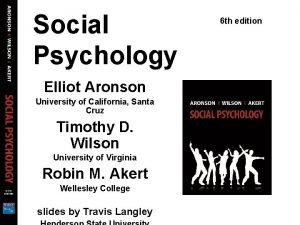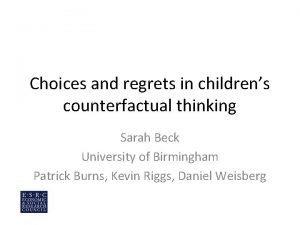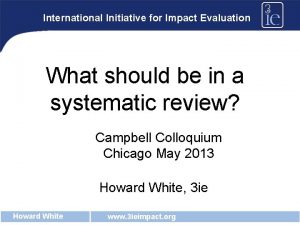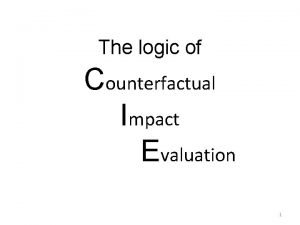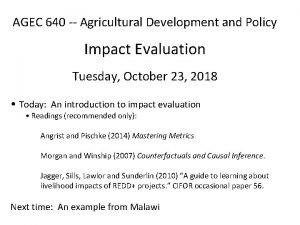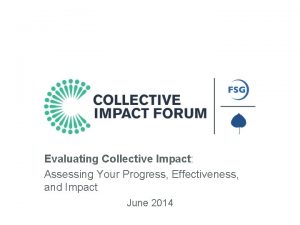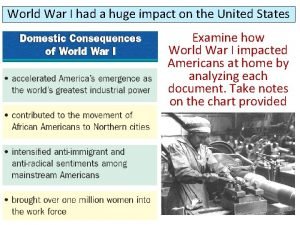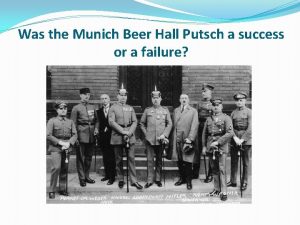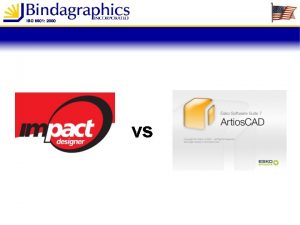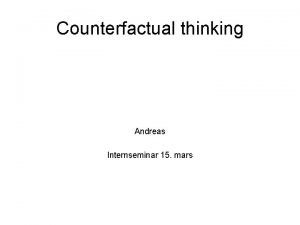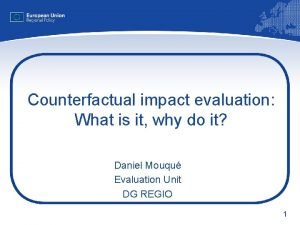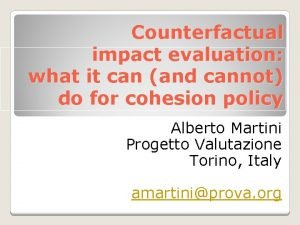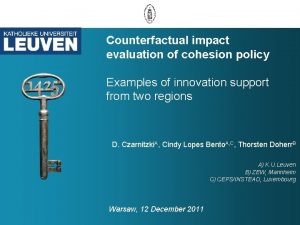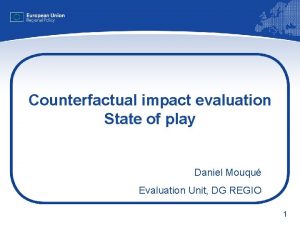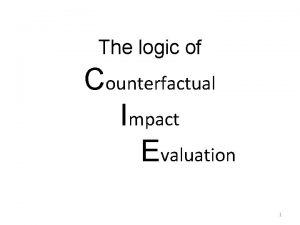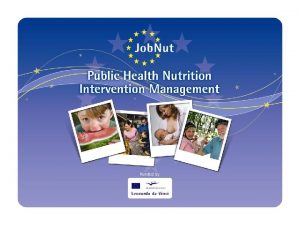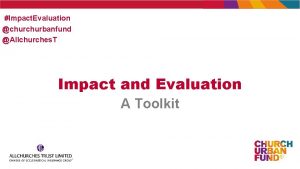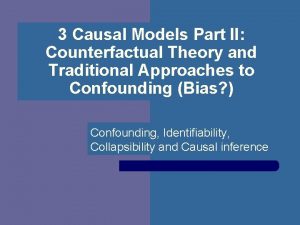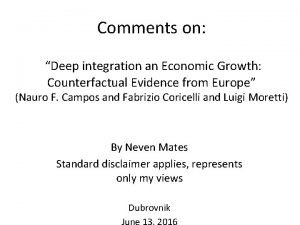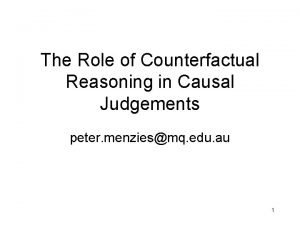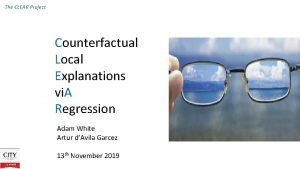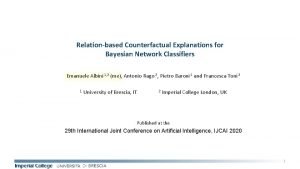Counterfactual impact evaluation What is it why do




















- Slides: 20

Counterfactual impact evaluation: What is it, why do it? Daniel Mouqué Evaluation Unit DG REGIO 1

An example: support to enterprise & innovation • Some € 79 billion of cohesion in 2007 -13: the largest broad category of expenditure • Key instrument: investment/research grant • But also significant spending on loans/venture capital, advice, networking, incubators • With all this at stake, we should know exactly what we’re doing, right? 2

What should we know about enterprise support? We’re managing a programme – what should we know? • The context and needs (productive base, sectors, weaknesses etc…) • What we plan to change (Investment? Productivity? Employment? ) • How we will change it: instruments, delivery, financial allocations • Activity/outputs (number of enterprises assisted etc) Question: is this enough? 3

In the long term, we want to know about impacts • Do the instruments work? In terms of increasing long run investment, productivity, employment, etc? • What is the optimum level of support? • Different effects of different tools? Better single instrument or mixed? • SMEs only or include larger enterprises? 4

In other words, we want to know. . . • What works? • How much impact does it have? • How to change/finetune it to get more impact? These questions apply to all cohesion policy fields: human resources, infrastructure, environment 5

But impacts are the tricky bit • monitoring to track implementation efficiency (input-output) § impact evaluation to measure effectiveness (output-outcome) Human behaviour MONITOR EFFICIENCY INPUTS OUTCOMES EVALUATE EFFECTIVENESS Plans, programmes Source: Arianna Legovini and the World Bank (modified) 6

How do we assess impacts? Traditionally in enterprise support: • Monitoring (but: « before/after » problem) • Beneficiary surveys • Opinion And enterprise support is one of the « good » areas – situation no better in training, infrastructure, environment 7

To truly know impacts, you must know… … What would have happened without the intervention Or in other words: The counterfactual 8

• How do we find this mysterious counterfactual? • Can it be observed? 9

A time machine? 10

Sadly, only in Hollywood… Maybe someday? 11

What do scientists do? 12

One thing scientists do to find counterfactuals: Compare twins 13

Source: www. webmd. com – smoking and sun are responsible here 14

Twins in cohesion policy? • Does this mean we can only provide training to twins? And only one of the two? • And what about enterprises? Or urban neighbourhoods in crisis? 15

Solution 1: large « n » - mobilising the power of statistics The « law of large numbers » As n increases, random differences tend to average out NB: « large » varies. But 20 or 50 may be enough 16

Solution 2: clever statistical matching techniques • Sometimes solution 1 is enough • But sometimes we need to use statistical techniques to find matches between the treated and non-treated populations We’ll come back to how this is done tomorrow… 17

But matching is not always straightforward 18

Examples of counterfactuals in practice • 100 innovation vouchers are randomly distributed between ~900 applicant firms, performance tracked • 500 long term unemployed in poor mental health – 250 receive standard support, 250 receive extra counselling • 70 deprived urban areas assisted. Performance on unemployment etc compared to neighbouring areas 19

To recap • It is crucial to know about impacts • But measuring impacts is far from straightforward, depends on human behaviour • « Traditional » techniques do not measure impact • We need a counterfactual, comparing performance of treated and non-treated • But counterfactuals are not the only useful technique… 20
 Counterfactual thinking
Counterfactual thinking Counterfactual thinking
Counterfactual thinking Why why why why
Why why why why International initiative for impact evaluation
International initiative for impact evaluation 70000/65
70000/65 Impact evaluation
Impact evaluation Collective impact evaluation
Collective impact evaluation Don't ask why why why
Don't ask why why why Why-why analysis
Why-why analysis Why willy why do you cry
Why willy why do you cry Does the table represent a function why or why not
Does the table represent a function why or why not What does a table represent
What does a table represent Why or why not
Why or why not Contoh root cause analysis
Contoh root cause analysis Impact of wwi
Impact of wwi Blhto
Blhto Cross impact matrix
Cross impact matrix High plains weathering erosion and deposition
High plains weathering erosion and deposition Pollution effects on ecosystems
Pollution effects on ecosystems What was the impact of the beer hall putsch?
What was the impact of the beer hall putsch? Impactcad
Impactcad
